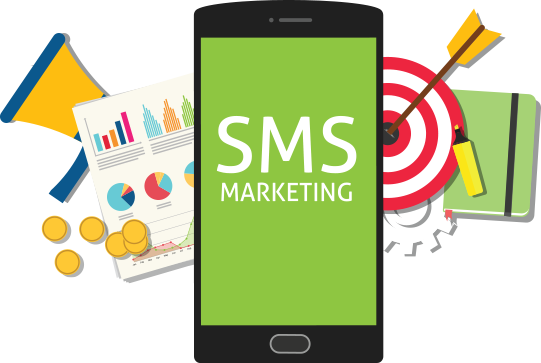Content marketing is a powerful way to attract and retain customers. However, many businesses struggle to turn their content into revenue. The solution lies in building a growth-focused search strategy that guides customers through the content marketing funnel.
A content marketing funnel is a model that helps you achieve your content marketing goals by showing you how to visualize and leverage existing content to guide potential customers from the moment you attract them until they become paying customers.
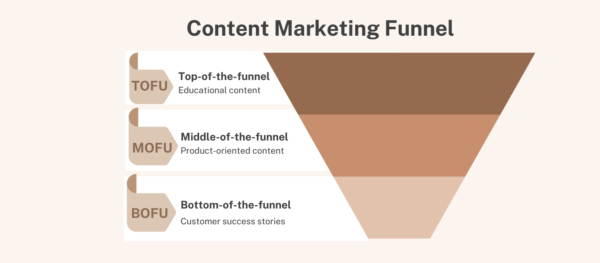
in the most basic sense, at the top of the content marketing funnel (TOFU), customers are searching for information. They may not even be aware of your brand or product yet. This is where search engine optimization (SEO) comes in. By optimizing your content for relevant keywords, you can attract potential customers to your website and introduce them to your brand.
Moving down the funnel, customers are looking for solutions to their problems. This is where your content needs to provide value and demonstrate your expertise. By creating in-depth guides, tutorials, and other resources, you can establish your brand as a thought leader in your industry. These translate to MOFU (middle of the funnel). The strategies you use and the efforts you put into MOFU determine BOFU (bottom of the funnel), which simply translates to your content marketing goal(s). MOFU strategies help you build trust with potential customers and encourage them to consider your product or service as a solution.

Understanding the Content Marketing Funnel
At its core, the content marketing funnel is a framework for understanding the customer journey and creating content that speaks to their needs at each stage. The funnel is typically broken down into three steps: top of the funnel (TOFU), middle of the funnel (MOFU), and bottom of the funnel (BOFU).
TOFU content is designed to attract new visitors to your site and generate brand awareness. This might include public relations content, search engine optimization (SEO) tactics, and influence or social media marketing that speaks to your audience’s pain points and interests. When using the content marketing funnel as a strategy, imagine yourself as a user and think about how you become aware of brands. These are the strategies you should apply in the TOFU of your content marketing funnel.
The next level of your content marketing funnel is MOFU. Here, content is designed to engage with visitors who have already shown an interest in your brand. This might include more in-depth blog posts, videos, case studies, and other types of content that provide high-quality and valuable information to your audience. The idea is to help them move closer to making a purchase by showing them you are the brand they should trust. Best practice for using the content marketing funnel requires that you give more focus to trending content marketing strategies since these evolve with time.
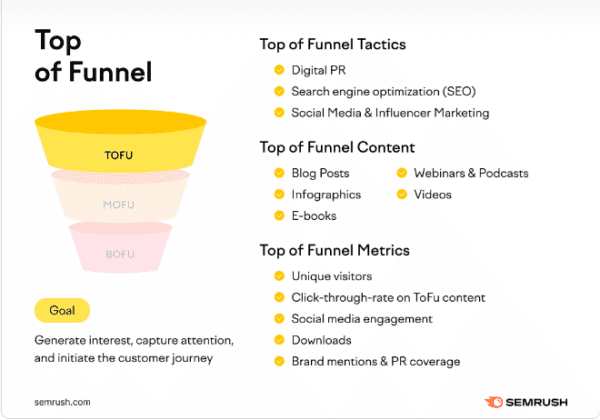
BOFU content is designed to convert visitors into paying customers. This might include product demos, free trials, and other types of content that help your audience understand the value of your product or service and make an informed decision, preferably a purchase. When you reach the BOFU level of your content marketing funnel, you have achieved your goal.
Therefore, by understanding the different stages of the content marketing funnel, you can create content that speaks to your audience’s needs at each stage and moves them closer to becoming customers.
Building a Growth-Focused Search Strategy
At the heart of a successful content marketing funnel is a growth-focused search strategy. In this section, we will discuss the critical components of such a strategy and how they can be used as part of the content marketing funnel to drive traffic and generate leads.

Keyword Research and Selection
The first step in building a growth-focused search strategy using the content marketing funnel is to conduct thorough keyword research and selection. This involves identifying the keywords and phrases that your target audience is using to search for products or services like yours online. Once you have recognized these keywords, you can use them to optimize your content and improve your search engine rankings. This is one of the most common ways to build brand awareness and ensure customers find you.
SEO-Friendly Content Creation
Creating SEO-friendly content is essential for building a growth-focused search strategy. This involves creating high-quality and informative content that is optimized for your target keywords and provides value to your audience. By doing so, you can improve your search engine rankings and drive more traffic to your website, thereby increasing your chances of conversions and more sales, depending on the goal(s) you have identified in the BOFU stage of your content marketing funnel.

On-Page and Off-Page SEO Techniques
As already mentioned, the content marketing funnel aims to increase brand awareness and the conversion of potential customers into paying customers. Several on-page and off-page SEO techniques can be used to improve your search engine rankings and achieve these outcomes. On-page techniques include optimizing your website’s meta tags, headers, and content, while off-page methods include building high-quality backlinks to your website from other reputable sites.
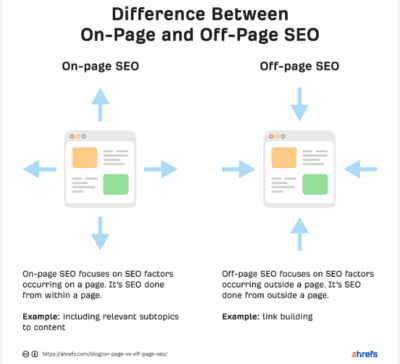
Link Building Strategies
Link building is a critical component of any growth-focused search strategy. This involves building high-quality backlinks to your website from other reputable sites, which can help improve your search engine rankings and drive more traffic to your site. Several link-building strategies can be used, including guest blogging, broken link-building, and outreach to influencers and industry leaders.
In summary, building a growth-focused search strategy using the content marketing funnel requires keyword research and selection, SEO-friendly content creation, on-page and off-page SEO techniques, and link-building strategies. By implementing these strategies, you can improve your search engine rankings, drive more traffic to your website, and generate more leads for your business, making it easy to achieve your BOFU goal for implementing the content marketing funnel.

Implementing the Content Marketing Funnel Strategy
When implementing a growth-focused search strategy in the content marketing funnel, it is essential to tailor your content to each stage of the funnel. By doing so, you can effectively move potential customers through the funnel and convert them into paying customers.
- Content for the Awareness Stage
In the awareness stage, which is at the top of the content marketing funnel, potential customers are looking for information online, meeting your website for the first time, and becoming aware of your brand and the products or services you offer. At this stage, it is essential to create content that educates and informs potential customers about your brand and what you have to offer. This can include influencer marketing, social media content, and videos.
2. Content for Consideration Stage
In this stage, potential customers are considering your brand and comparing it to other options. This happens in the middle of the content marketing funnel (MOFU). In the MOFU stage, it is essential to create content that showcases the benefits of your brand and highlights why it is better than the competition. This can include case studies, whitepapers, and product demos. The goal of the MOFU stage of the content marketing funnel is to spark interest in potential customers and prompt them to take the next step in engaging with your website.
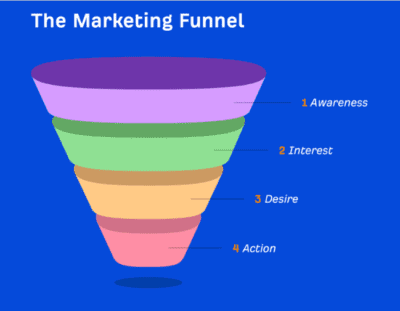
3. Content for the Decision Stage
In the decision stage, potential customers are ready to purchase. In this level of the content marketing funnel, it is essential to create content that eliminates indecisiveness among your potential customers and convinces them to choose your brand by making a purchase. This can include customer testimonials, reviews, and product comparisons.
By tailoring your content to each stage of the content marketing funnel, you can effectively move potential customers through it and convert them into paying customers.
4. Measuring and Optimizing the Content Marketing Funnel
As you implement your content marketing funnel and search strategy, it’s essential to track and analyze metrics to ensure you are achieving your growth goals. By measuring and optimizing the funnel, you can make necessary adjustments to improve your results and record a remarkable return on investment for all the efforts you have put in the preceding stages.
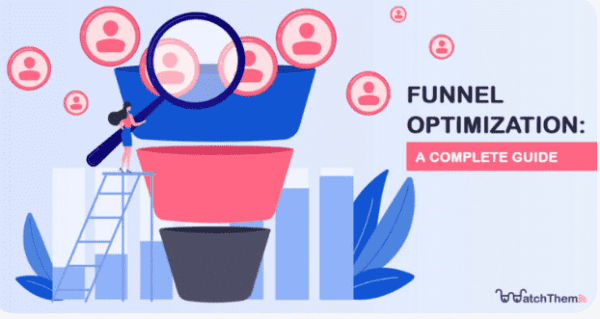
5. Tracking Metrics
To track your funnel’s success, you need to measure key metrics at each stage of the content marketing funnel. Here are some metrics you can focus on:
- Awareness: website traffic, social media reach, impressions, and click-through rates (CTR)
- Consideration: time spent on site, bounce rates, page views, and form submissions
- Conversion: conversion rates, lead quality, and sales revenue
By tracking these metrics, you can identify which funnel stages need improvement and adjust your strategy accordingly.
6. Analyzing Results
Once you have collected data from the metrics of your content marketing funnel, you need to analyze the results to identify areas for improvement. Here are some questions you can ask when interpreting your results:
- Are you attracting the right audience?
- Are visitors engaging with your content?
- Are you converting visitors into leads and customers?
By answering these questions, you can identify where your funnel may fall short and make necessary adjustments.

7. Making Necessary Adjustments
Based on your analysis, you may need to adjust your content, messaging, or targeting. Here are some adjustments you can make:
- Improve content quality and relevance
- Adjust targeting and messaging to attract the right audience better
- Optimize landing pages for better conversion rates
- Implement A/B testing to determine which changes are most effective
By making these adjustments, you can optimize our funnel and achieve our growth goals.
Case Study: Successful Content Marketing Funnel
At our company, we implemented a content marketing funnel to attract and engage potential customers. We started by creating informative blog posts and social media content that addressed common pain points and questions related to our industry.
We also provide monthly marketing insights reports for different industries to those who are subscribed to our email list. The reports provide more in-depth information, market trends, and recommendations for the problems our target audiences face.
Once a prospect subscribes to our email list, we send them a series of emails that provide even more valuable content and offer them the opportunity to schedule a free consultation with our experts.
Our content marketing funnel generates success in several ways. First, it helps us build a sizable email list of potential customers who are interested in our services and the solutions we offer. Second, it helps us establish ourselves as experts in the field and build trust with our audience. Finally, it leads to an increase in qualified leads and sales.
Overall, our content marketing funnel is a key component of our growth-focused search strategy and helps us achieve our business goals.

